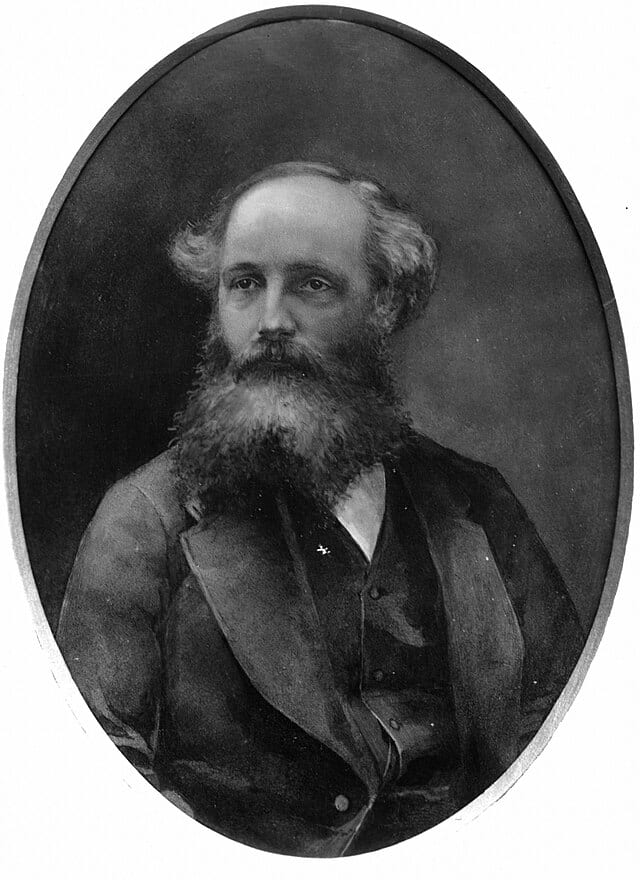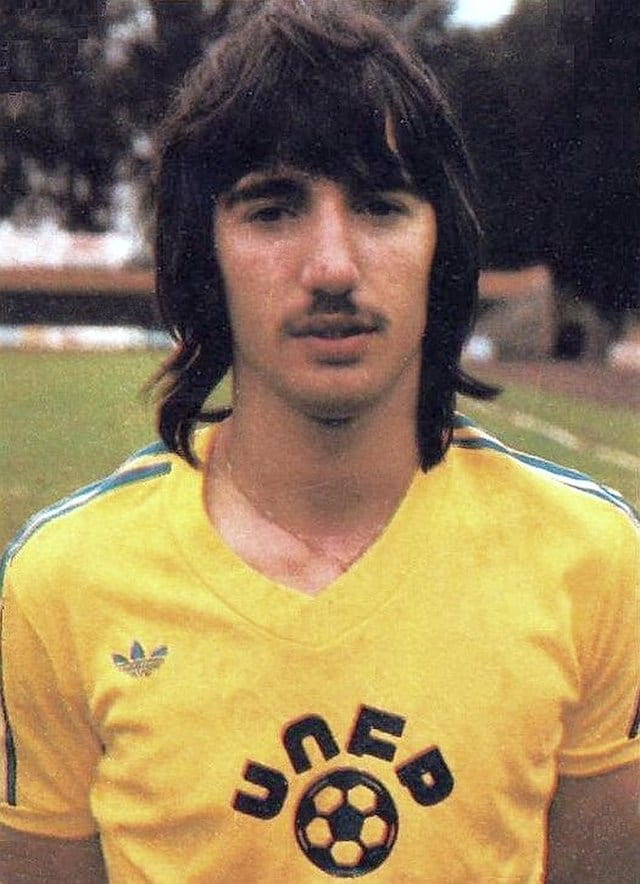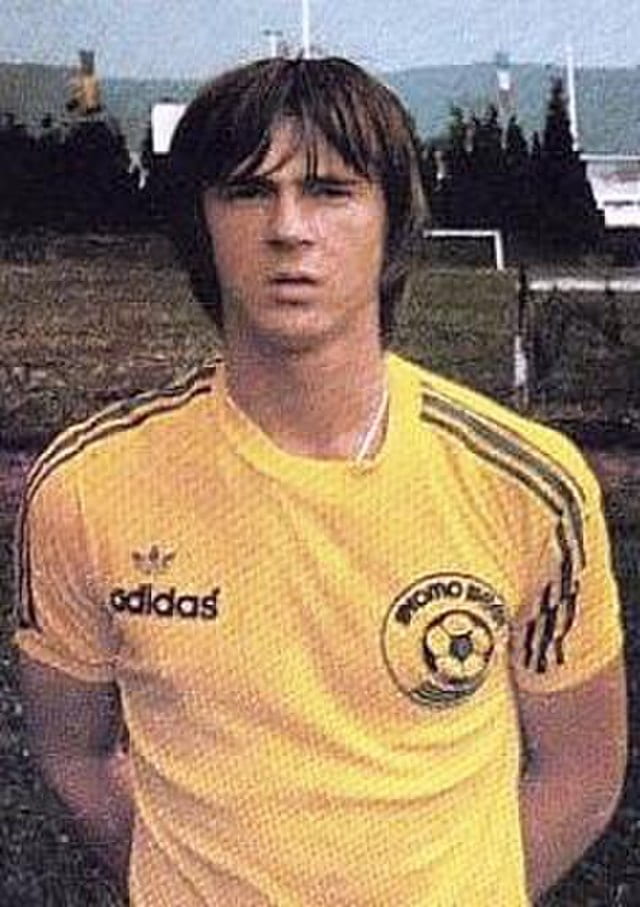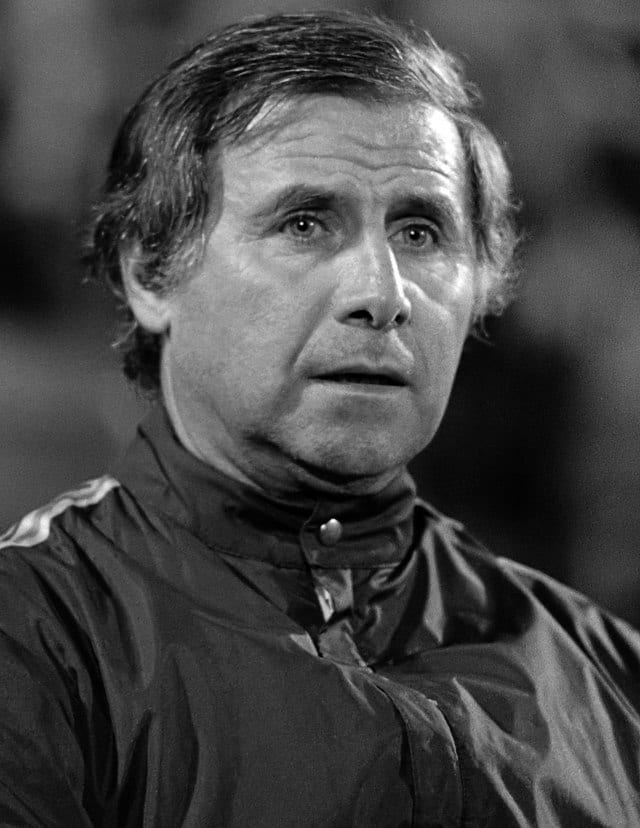By Laurent Bellaiche
Electromagnetism is a branch of physics devoted to the study of electric and magnetic fields, and If we neglect the relativity dear to Einstein and stay within the classical physics of Newton, it is based on four fundamental equations. The first one relates electric charge to the electric field it creates and is actually called Gauss’s law. The second equation characterizes the fact that magnetic charges do not exist, which imposes a constraint on the shape of the magnetic field. Carl Friedrich Gauss is still in the limelight with this second equation because the latter is denoted as Gauss’s law for magnetism. The third equality owes its name to Michael Faraday and decrees that a magnetic field which evolves over time automatically generates an electric field. The last fundamental equation comes from André-Marie Ampère and indicates that a current of electric charges gives rise to a magnetic field. But oh, the horror–these four equations taken together violate another fundamental theorem of physics, the theorem of charge conservation.
James Clerk Maxwell, entered the scene in the 1860s, probably wearing his kilt (he was Scottish), and probably said: Hoi Polloi, look how handsome, smart and clever I am. I add a second term, quite simple and which depends on the temporal variation of the electric field, to the right side of the equality proposed by Ampère et voilà, the charge conservation theorem is now respected!
Good job Jamie, but your simple addition had the unfair consequence that the four equations are now all known as Maxwell’s equations, while you haven’t changed the first three in any way. And the name of Gauss is now somewhat overlooked in physics (but not in mathematics where he also did remarkable work), though he is responsible for the first two fundamental equations of classical electromagnetism. What a scandal.
A similar naming scandal has affected the world of soccer. As a matter of fact, when one hears the expression le Carré Magique, (“the magic square”) French flair and brilliant technical skills come automatically into mind. Four names also emerge out of the blue (or shall we say out of Les Bleus?): Michel Platini, Alain Giresse, Jean Tigana and Luis Fernandez. This remarkable association in the national French team of the 1980s is commonly thought to constitute one of the best midfields in the history of (real) football. However, the combination of these four giants is only the second version of the magic square. The first “carré Magique’’ also had Michel Platini, Alain Giresse and Jean Tigana within it but the fourth player was not Luis Fernandez. Rather, it was Bernard Genghini, who is now probably overlooked. His life and career deserve to be remembered.
Bernard Genghini was born on January 18, 1958 in Soultz-Haut-Rhin in Alsace, into a family of Italian origin (like Michel Platini). From an early age, he was given the nickname Tchouki, which he explained as follows: “When I was very young, I was hidden behind the others because I was too small to play. There is one who called me Tchouki; at the time, Jean Djorkaeff was also nicknamed like that; and it stayed.’’ (Note that Tchouki is a name of Kamulke origin, and that Jean Djorkaeff was also a French International and is the father of the 1998 world champion, Youri Djorkaeff)). Genghini made his football debut in the amateur club FC Guebwiller in Alsace, and then joined the newly created FC Sochaux training center in 1974. A year later, he took part in the final of the 1975 Gambardella, which is the French Cup for under 19s. The goalkeeper of Sochaux was Joël Bats, who will later win the Euro 1984 with France and become a semi-finalist at the 1986 World Cup after having been one of the heroes of the legendary France-Brazil of this latter World Cup. The opponent of the day, Nantes, opened the scoring by Bruno Baronchelli, who will also wear the French jersey a few years later. Genghini then demonstrated the magic of his left foot by equalizing with a beautiful free kick. The final score was 1-1, but Nantes ended up winning on penalties by 6-5.
Bernard Genghini started playing in the Sochaux first team during the 1976-1977 season. This club then improved, as evidenced by its 14th place in 1976-1977, followed by ninth place in 77-78 and 78-79 and a second place three points behind Nantes in 1979-80. The Sochaux playmaker with the magical left foot, Genghini, scored 15 goals during this last season while his teammate Yannick Stopyra had a tally of 14 goals. Sochaux therefore qualified to compete in the UEFA Cup 1980-1981. Sochaux first eliminated Servette Genève by winning the first leg at Stade Bonal by 2-0 before only losing in Switzerland on the return leg by 2-1; the goal of Sochaux at Stade Charmilles being scored by Genghini. Sochaux thus qualified and played the next game against Boavista. It ended by a 2-2 draw in France, with another goal from Genghini but also from Patrick Revelli, which was nicknamed the Gaul because of his thick mustache. It was Durkalic who scored for Sochaux the only goal of the second leg in Portugal, which allowed the French team to face in the third round the defending champion, the ogre Eintracht Frankfurt of Hölzenbein. During the first hour of play in Germany, Sochaux found themselves near a total annihilation, as Frankfurt led 4-0 in the 61st minute. Genghini reduced the score in the 72nd minute and Frankfurt’s elegant Austrian central defender Bruno Pezzey netted an own goal just before the end of the game. Sochaux was rather lucky with this 4-2 defeat and few people were betting on a qualification of the French team for the quarter-final before the return match in France. This latter game was played on December 10, 1980, on a snowy pitch and Patrick Revelli was its hero by scoring the two only goals of a historic and unexpected qualification.
It was now the Swiss Grasshopper who faced Sochaux. The first leg in Zurich ended 0-0 and the return in Sochaux on March 18, 1981, was nerve-wracking. Köller scored for the Swiss team in the 10th minute. Durkalic equalized for Sochaux in the 24th minute. The score remained 1-1 until the last six minutes. There was then a free kick for Sochaux in the 84th minute. Genghini placed his ball about twenty meters from the Swiss goal guarded by the international Berbig. He then executed with his enchanting left foot a marvelous free kick which lodged in the top left corner of the goal net. Sochaux won by 2-1 and now faced in the semi-finals AZ Alkmaar, which would win its first Dutch championship as well as the national cup during this 1980-1981 season. The first leg took place in Sochaux. Arntz opened the scoring for the Dutch team in the 14th minute but Genghini equalized eight minutes later from a Stopyra’s pass. The score remained there and the return leg in the Netherlands promised to be perilous. Tchouki, again, opened the scoring in the 9th minute but Metgod, Jonker and Jan Peters made it 3-1 for the locals. Thierry Meyer reduced it in the 74th minute for the French. Many observers then wondered if Sochaux will then score the third goal that will allow them to meet in the final the Ipswich of Thijssen, Butcher, Wark, Arnold Mühren, Mariner and Brazil, who had martyred Saint-Etienne during this European competition. It was not the case, and Ipswich would then win the 1980-1981 UEFA Cup by beating AZ Aalkmar in the final.
This European epic however cost Sochaux some energy in the 1980-1981 French championship, as evidenced by a 14th place. Sochaux made up for it the following season by finishing third, six points behind Monaco and five points behind Saint-Etienne. It is precisely this last club that Genghini joined at the start of the 1982-1983 season, after 71 goals scored in 212 games for Sochaux. Genghini went to Saint-Etienne to take over from Michel Platini, who left for Juventus.
Before talking about the rest of Genghini’s career, it is worth talking about Genghini’s love affair with Les Bleus until the start of the 1982-1983 season. Tchouki got his first cape on February 27, 1980, at the age of 22 against Greece, replacing Didier Christophe (another neophyte that day) for the last 20 minutes of the match, which France won 5-1. He played with his Sochaux teammate Yannick Stopyra (who also got his first selection), as well as Jacques Zimako (with whom he will play at Sochaux in the 1981-1982 season) and Michel Platini, author of two goals during this game. His fourth match with the French team is a great moment in the history of football and is a game that the French had to win on November 18, 1981, at the Parc des Princes against the double vice-champions of the world, the Netherlands, in order to hope to qualify for the 1982 World Cup. The French coach, Michel Hidalgo, made a huge gamble by lining up three number ten in midfield in his usual 4-3-3: Platini, Giresse and Genghini, who then played in a more defensive position than in Sochaux. France won the match 2-0. Genghini’s first goal with France came 17 days later, closing the score 4-0 against Cyprus in Paris thanks to a header after a Bruno Bellone’s cross. France could then prepare for the 1982 World Cup, and Genghini took the opportunity to score his second goal with France in a friendly match won 4-0 against Northern Ireland in Paris.
Genghini did not play the first match against England they lost 3-1 during this 1982 World Cup. He returned to the field alongside Giresse and Platini during the second game against Kuwait. Tchouki opened the scoring with another free kick from his left foot. France won 4-1 this rather exotic match during which the referee refused a goal to Giresse following the arrival of Cheik Fahd on the field. The Genghini-Platini-Giresse trio was also in action in the game against Czechoslovakia. Didier Six scored the first goal for France but Panenka equalized from a penalty four minutes before the end of the game. The French defender Manuel Amoros headed away a dangerous ball on its goal line in the dying moments of the game, which resulted in France qualifying for the second round. The next match was against the Austria of Koncilia, Pezzey (who Tchouki met again two years after Sochaux-Frankfurt), Prohaska, Schachner and Krankl. Platini could not play that game and Hidalgo then chose Genghini, Giresse and Tigana in midfield. Once again, Bernard scored another wonderful free kick to seal the fate of this match won 1-0 by France. An existential crisis arose at the end of this match: Platini has recovered but Genghini, Giresse and Tigana played very well against Austria. Which player among these four should then be a substitute against the youngster Norman Whiteside’s Northern Ireland, given that Michel Hidalgo appreciated the 4-3-3 strategy? Sports journalists torn each other apart on the subject and it was even envisaged that Platini will start the match on the bench. In fact, Michel Hidalgo made another gamble: he adopted a 4-4-2 with Platini-Genghini-Giresse-Tigana in the midfield. The magic square then saw the light of day for the first time and France won the match 4-1 with two goals from Giresse and Rocheteau each. France thus qualified to its first World Cup semi-final since 1958. This is the historic France-West Germany match won on penalties by the Germans while the French team was leading 3-1 with 20 minutes remaining. Bernard Genghini was substituted in this match by Battiston in the 50th minute. Ten minutes later, Battiston was knocked out by the German goalkeeper Schumacher. Tchouki did not play the game against Poland for the third place because Hidalgo wanted to reward the substitutes.
When he returned from this World Cup, Bernard Genghini was only 24 years-old and his future looked bright. He has just joined one of the most popular clubs in France, Saint-Etienne, which won the championship the previous year and played in the two last French Cup finals (losing against the Bastia of Marcialis and Milla in 1981 and the PSG of Rocheteau and Surjak in 1982). Tchouki also had a great 1982 World Cup with the French team.
However, the 1982-1983 season can be considered as the beginning of the difficulties he would then encounter. His first match with France in August 1982 was a heavy 4-0 defeat at the Parc des Princes against Poland. In the next game against Hungary in October 1982 in Paris, Genghini was substituted by Jean-Marc Ferreri in the 64th minute and a new club mate, Laurent Roussey, scored the game’s only goal one minute later. A month passed and on November 10, 1982, Michel Hidalgo called for the first time a young 23-year-old midfielder who was rising in French football, Luis Fernandez, for a match in the Netherlands. France won this game two goals to one, with a brilliant Fernandez and without Genghini. Tchouki did not return to the French team until five months later, and this for only the last eleven minutes of the match won 4-0 by Les Bleus against Yugoslavia (replacing José Touré, author of a goal five minutes earlier). His club adventure in Saint-Etienne was also going badly, in the middle of a slush fund affair, with Saint-Etienne finishing in a disappointing 14th place in the league and being eliminated without glory in the second round of the UEFA Cup by taking a beating 4-0 in the return leg in Czechoslovakia against the Bohemians of Prague on November 3, 1982. One will have to wait 26 years to see Saint-Etienne playing again in a European Cup (which is the UEFA Cup 2008-2009).
Genghini then decided to change clubs in the summer of 1983 after a single season with Saint-Etienne, with whom he scored ten goals in 41 games. He signed with AS Monaco, where he stayed for three years. His first season saw Monaco fail by the goal difference for the title of champion of France in favor of the Girondins of Bordeaux, despite Tchouki’s 18 goals. The French Cup final was also surprisingly lost against the FC Metz of Kurbos and Hinschberger, while AS Monaco fielded eight French internationals: Ettori, Amoros, Le Roux, Bijotat, Patrick Delamontagne, Bravo, Bellone and Genghini. Meanwhile, in the French team, Hidalgo aligned for the first time in February 1984 against England the second version of the magic square: Platini-Giresse-Tigana-Fernandez. France won 2-0 with two goals from Platini and it was realized that this second version of the magic square was better balanced than its first version because Tigana and Fernandez were used to defensive tasks (unlike Genghini) and Platini and Giresse had free rein for their creativity without fear of losing the ball. Bernard Genghini therefore lost his starting place in this magic square, although he scored the only goal of the match against West Germany in a friendly match played in his native region (Strasbourg, in Alsace) in April 1984.
It was therefore the new version of le Carré Magique which started in midfield for all the matches of Euro 84 won by France, with one exception: for the second match against Belgium in Nantes, Luis Fernandez played as a right-back defender, allowing Genghini to reunite with Platini, Giresse and Tigana in midfield. One could therefore have spoken of a magic pentagon that day, especially as France gave a demonstration of football with a 5-0 victory against Belgium with a hat-trick from Platini, a goal from Giresse and another from Fernandez. Genghini will again play in this Euro 1984 but only for the last ten minutes of the final against Spain. Tchouki would then wear the French jersey only three other times, all under the new management of Henri Michel: France-Bulgaria (1-0) in November 1984, the match for third place against Belgium in the world 1986 (4-2 victory, which coincides with Genghini’s last goal for Les Bleus) and a sad Iceland-France on September 10, 1986 (0-0) for a match played with Stopyra and which is also the first in the French team for another naturally gifted Sochaux resident, Stéphane Paille. All in all, Bernard Genghini has worn the French team jersey 27 times for six goals and beautiful moments.
As for his club career, Tchouki won the Coupe de France in the 1984–85 season, scoring the only goal in the final against PSG. This is even more remarkable given that Paris Saint-Germain won all its first six French Cup finals between 1982 and 1998, with the exception then of 1985. Monaco also finished third in the French championship that season, 11 points from the winner, Bordeaux, thanks to 15 goals from Genghini and 14 goals from Philippe Anziani, also a French international and former Sochaux player. Monaco was eliminated in the first round of the UEFA Cup by CSKA Sofia, despite two goals from Genghini in the first leg at the Stade Louis II for a result of 2-2, before losing 2-1 in Bulgaria.
It was also a disappointment during Monaco’s next European campaign, the 1985-1986 Cup Winners’ Cup, with elimination in the first round by another Eastern European club, Universitatea Craiova; this, despite a victory for Monaco in the first leg at the Stade Louis II by 2-0 with goals from Bellone and again Genghini. The second leg saw the Romanians sweep Monaco 3-0. On the other hand, on January 18, 1986, Monaco crushed the outgoing French champion, the Bordeaux of Dropsy, Battiston, Roche, Tigana and Giresse, by the bewildering score of 9-0 in the French championship. Tchouki went for a quadruple. It was in fact the swan song for Genghini who left Monaco at the end of the season after a modest ninth place in the league, and despite having scored 13 goals in the French championship 85-86. He played 129 games for 57 goals with the Monegasque jersey.
Genghini then joined a new club and country, with Servette Genève. Only six small games with the Swiss club for a single goal, and it was then the return to the French league on November 20, 1986, at Marseille. The president Bernard Tapie signed Tchouki, who then joined Giresse, who arrived in July from Bordeaux, because Marseille was in the process of building a great team. Olympique Marseille (OM) finished second, four points behind Bordeaux, still champions in 86-87, and lost the French Cup final again against Bordeaux. Genghini played little during this season because he suffered a tough competition against the formidable Yugoslav Blaz Sliskovic. Tchouki, for example, only played the second half of the 1987 French Cup final, in place of Thierry Laurey. Genghini, on the other hand, saw much more action with OM during the following season of 1987-1988, which saw Marseille finish sixth in the French championship but especially reach the semi-finals of the European Cup Winners’ Cup, after having eliminated Lokomotiv Leipzig, Hadjuk Split and Finland’s ROPS Rovaniemi. Genghini then played again a semi-final of a European Cup in April 1988, seven years after the one with Sochaux. Another Dutch club stands in his way, with Ajax Amsterdam this time. The score of the first leg in Marseille was a thrashing 3-0 victory for Ajax, with two goals signed by Rob Witschge and one by Dennis Bergkamp. The goals of Papin and Klaus Allofs for a 2-1 victory for OM in the Netherlands were insufficient, and Ajax then failed in the final against the Belgian club of Mechelen.
Tchouki was let go by OM at the end of this season, after 50 games in the Olympian jersey for only six goals. He then opted for Bordeaux in the summer of 1988, which he had so much tormented two and a half years before with Monaco. However, he only played four games there for a single goal, before retiring in 1989 after an injury, at the relatively young age of 31.
One may wonder why such a player is quite forgotten nowadays. We can evoke a certain curse, having finished second in the French championship three times with three different clubs (Sochaux, Monaco, OM), having lost two French cup finals with Monaco and OM as well as a Gambardella cup with Sochaux, and having been eliminated four times at the semi-final stage (twice in a European Cup with Sochaux and OM, and twice with the French team at the 1982 and 1986 World Cups). He also had a bit of bad luck having been number 10 at the same time as Platini and Giresse and having witnessed the emergence of Luis Fernandez in the French team. However, the major reason may be related to the first two equations of classical electromagnetism, those of Johann Carl Friedrich Gauss. These two equations raise questions about the difference in symmetry between electric and magnetic properties: electric charges exist unlike, it seems, magnetic charges. It is the same with Genghini because his technical quality, left foot and free kicks could electrify a crowd but his silent and discreet character did not allow him to have a magnetic personality.
Laurent Bellaiche is a Distinguished Professor in the Physics Department and Institute for Nanoscience and Engineering, as well as the Twenty-First Century Endowed Professor in Optics, Nanoscience and Science Education (for more details, please see: ccmp.uark.edu). His favorite team is Paris Saint-Germain, especially that of the first trophies (French Cups) in the 1980’s, with the three Dominique’s (Baratelli, Bathenay and Rocheteau) and two jewels (Safet Susic and Mustapha Dahleb). His two favorite male football players of all time are Diego Armando Maradona and Robby Rensenbrink. His current three favorite female players are Grace Geyoro, Melchie Dumornay and, of course, Sophia Smith. His favorite soccer/football quote is one from Bill Shankly, “Some people think football is a matter of life and death – I assure you, it’s much more important than that.”




